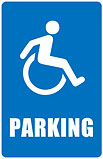- Main Page
- A1C Test
- Advance Directives
- Age on other Planets
- Aliens
- American Flag
- Annuals
- Anxiety
- Aortic Aneurysm
- Apple Cider Vinegar
- Arrhythmia
- Atrial Fibrillation
- Avoiding Scams
- Awareness Ribbons
- Bamboo
- Banana Tree, Grand Nain
- Banana Tree, Ice Cream
- Banana Tree, Zebrina Rojo
- Beekeeping
- Benign P P Vertigo
- Birth Month
- Blood Tests
- Blood Types
- Body Mass Index - BMI
- BMI Calculator
- Boogaloo
- Bookmarks
- Boot Anatomy
- Boot Fit Guide
- Boot Glossary
- Boot Leathers
- Boot Makers
- Boot Retailers
- Boot Styles - Western
- Boot Toes & Heels - Western
- Boot Toes & Heels - Work
- Bronchitis
- Candle Colors
- Carbohydrates
- Cardiac Catheterization
- Cardiovascular Disease
- CGM's
- Chakras
- Chinese Zodiac
- Cholesterol
- Christmas Tree
- Color Codes Chart
- C.O.P.D.
- Coronary Artery Disease
- Country Stars
- Cowboy Hat Etiquette
- Cowboy Hat Sizing
- C.P.A.P.
- Credit Score Checkers
- Crystals & Gems
- CT scan
- Degenerative Disk Disease
- Depression
- Diabetes Info.
- Diabetes Facts
- Diabetes - Pre
- Diabetes - Type 1
- Diabetes - Type 2
- Diabetes - Type 3c
- Diabetes - Gestational
- Diabetes Care
- Diabetes Care Team
- Diabetes Terms
- Diabetes Treatment
- Diabetes & Fruits
- Diabetes & Veg's
- Diet - Boiled Egg
- Diet - DASH
- Diet - Fat Burning
- Diet - Mediterranean
- Diet - Military
- Disability
- Do Not Resuscitate
- Dream Catchers
- Dupixent®
- Echocardiogram
- Electrocardiogram
- Emphysema
- Epsom Salt
- Eye Teasers
- Fairies
- Farxiga®
- Flower Astrology
- Fonts
- Foods To Regrow
- Friend
- Funny Things
- Fun Stuff
- Glycemic Index
- Gout
- Growing Blueberries
- Halloween
- Halloween Treats
- Headaches
- Health Info. Lines
- Heart Attack
- Heart Disease - Other
- Heart Failure
- Heart Tests
- Hello!!
- Herbal Codes
- Herbal Medicine
- Herb & Oils Uses
- Herniated disk
- Home Remedies
- House Plants
- Humalog®
- Hydrogen Peroxide
- Hyperglycemia
- Hypoglycemia
- Hyperkalemia
- Hypokalemia
- Hypertension
- Hypotension
- Important Numbers
- Insomnia
- Insulin
- Juice Recipes
- Karma
- Kidney Cysts
- Kidney Disease
- Kinds of Tea
- Lantus®
- Lemon Cleanse
- Logger vs Lineman
- Macaroni!!
- Medicare
- Mental Health
- MO HealthNet
- Moon Phases
- Mounjaro®
- MRI Scan
- My Athletic Shoes
- My Boots & Spurs
- My Cowboy Hats
- Myelography
- Mystical Unicorn
- Nasal Polyps
- Natal Astrology Chart
- Never Forget
- Nuclear Medicine
- Nutrition - Adults
- Nutrition - Adults, Older
- Nutrition - Kids
- Obesity
- One Little Rose
- Orchid Growing
- Orchid Sources
- Pagan Humor
- Pagans vs.Wiccans
- Parking Spaces
- PayPal.Me
- Pentagram vs. Pentacle
- Perennials
- Peripheral Artery Disease
- PET/CT Scan
- PET Scan
- Phobias A-Z
- Plant Care
- Plant Zone Map
- Potassium
- Propagating Plants
- Prurigo Nodularis
- Psychic Gifts
- PVC's
- Quit Smoking
- Recipes I like
- Red Yeast Rice
- Roses
- Runes
- Sadie & Beethoven
- Salt & Sodium
- Salt Water Flush
- Sciatica
- Service Animals
- Shape Shifters
- Sleep Apnea
- Sleep Disorders
- Sleep Studies
- Smile
- SPECT Scan
- Speed Test
- Spices You Need
- Spices I Have
- Spinal Stenosis
- Stents
- Steel Toe vs. Comp. Toe
- Stress Test - Exercise
- Stress Test - Nuclear
- Sugars - Sweeteners
- Superstitions
- Symbols
- Tarot
- The Ten Commandments
- Tools of the Craft
- Top Expensive Movies
- Top Modern Westerns
- Top 100 Westerns
- Toyota Yaris 2008
- Toyota Yaris 2012
- Trazodone
- Tree, Calamondin Orange
- Tree, Lemon (Meyer)
- Tree, Lime
- Tree Signs
- Ultrasound
- US Bill of Rights
- US Constitution
- US Declaration of Independence
- Vaccines by Age
- Vaccines 0-6 yrs
- Vaccines 7-18 yrs
- Vaccines 19 and up
- Ventricular Fibrillation
- Vertigo
- Vital Records
- Vital Signs
- Vitamin B12
- Vitamin C
- Vitamin D
- Vitamin E
- Vitamin K
- Vitamins & Minerals
- Water Therapy
- Weight on other Planets
- Wiccan Rede
- X-Rays
- Yin / Yang
- Zodiac Signs
Needed to read PDF's
Parking Spaces
Handicap Accessible
When state or local governments, businesses and non-profit organizations provide parking lots or garages, accessible parking spaces complying with the Americans with Disabilities Act (ADA) must be provided.
Accessible parking spaces are different than traditional parking spaces. They have specific features that make it easier for people with disabilities to access your programs, goods or services.
Features
Location
In parking lots or garages, accessible parking spaces must be located on the shortest accessible route to the accessible entrance. An accessible route is the path a person with a disability takes to enter and move through a building or facility.
Access Aisles
Accessible parking spaces must have access aisles. Access aisles provide a designated area for people who use wheelchairs or other mobility devices to get in and out of their car or van. Mobility devices allow people with disabilities to move about independently. They include walkers, canes, crutches, braces, manual or power wheelchairs, Segways, and electric scooters.
Access aisles must be:
Marked (to discourage drivers from parking in them
The same length as the space
Level with the parking space
Two accessible parking spaces can share an access aisle with the access aisle between the two parking spaces (except in angled parking).
An access aisle can be placed on either side of the parking space (except in angled parking where it must be located on the passenger side of the parking space).
Parking Spaces
Accessible parking spaces must be provided for cars and vans.
Car accessible spaces must:
Be at least 96 inches wide
Have an access aisle at least 60 inches wide
Have no more than a 1.48 (2.08%) slope in all directions
Have a surface that is firm, stable, and slip-resistant
Have a sign with the international symbol of accessibility on it, mounted at least 60 inches above the ground (measured to the bottom of the sign)
Van accessible spaces must (pick option #1 or #2)
Option #1
Be at least 132 inches wide
Have an access aisle at least 60 inches wide
Have no more than a 1:48 (2.08%) slope in all directions
Provide at least 98 inches of vertical clearance (van height) for the parking space, access aisle, and vehicular route
Have a surface that is firm, stable, and slip-resistant
Have two signs, mounted at least 60 inches above the ground (measured to the bottom of the sign
- First sign: international symbol of accessibility
- Second sign: stating that the space is van accessible
Option #2
Be at least 96 inches wide
Have an access aisle at least 96 inches wide
Have no more than a 1.49 (2.08%) slope in all directions
Provide at least 98 inches of vertical clearance for the parking space, access aisle and vehicular route
Have a surface that is firm, stable and slip-resistant
Have two signs, mounted at least 60 inches above the ground (measured to the bottom of the sign
- First sign: international symbol of accessibility
- Second sign: stating that the space is van accessible
Calculating Accessible Parking Spaces
The number of accessible parking spaces must be considered separately for each parking structure (lot or garage), not based on the total number of parking spaces provided on a site.
The chart below shows the number of accessible spaces required by the ADA Standards for Accessible Design.
|
Total Number of Parking Spaces
Provided in a Parking Lot or Facility |
A) Minimum Number of Accessible
Parking Spaces Required |
B) Minimum Number of Van
Accessible Sparking Spaces |
| 1 to 25 | 1 | 1 |
| 26 to 50 | 2 | 1 |
| 51 to 75 | 3 | 1 |
| 76 to 100 | 4 | 1 |
| 101 to 150 | 5 | 1 |
| 151 to 200 | 6 | 1 |
| 201 to 300 | 7 | 2 |
| 301 to 400 | 8 | 2 |
| 401 to 500 | 9 | 2 |
| 501 to 1000 * | 2% of total parking provided in each lot or structure | 1/6 of Column A (one out of every 6 accessible spaces) |
| 1001 and over * | 20, plus 1 for each 100, or fraction thereof, over 1000 | 1/6 of Column A (one out of every 6 accessible spaces) |
|
* At least one of every six spaces must be van accessible. |
||
Special Parking Conditions
Limited Parking
Where parking spaces are limited to four or fewer spaces:
One van accessible parking space must be provided
A sign identifying the accessible space is not required
Parking at Hospital Facilities
Hospital Outpatient Facilities
Ten percent of patient and visitor parking must be accessible. At least one of every six accessible parking spaces must be van accessible.
Rehabilitation Facilities
Twenty percent of patient and visitor parking must be accessible. At least one of every six accessible parking spaces must be van accessible.
Outpatient Physical Therapy Facilities
Twenty percent of patient and visitor parking must be accessible. At least one of every six accessible parking spaces must be van accessible.
Signs
Accessible parking spaces must be identified by signs that include the International Symbol of Accessibility. Signs at van-accessible spaces must include the additional phrase “van-accessible.”
Signs should be mounted so that the lower edge of the sign is at least five (5) feet above the ground. This helps ensure visibility both for motorists and local enforcement officials.
Exceptions
- Small parking lots of four or fewer spaces must have accessible spaces, but those spaces do not need a sign and anyone, with or without a disability, can park in the accessible space. This is intended so very small entities do not have to reserve 25% to 100% of their available parking for individuals with disabilities.
- Residential facilities where parking spaces are assigned to specific dwelling units are also not required to post signs at accessible spaces.
Note: These two exceptions only relate to signs; accessible parking spaces are still required.
Find me on Social Media
 |
Don't forget to bookmark me to see updates.. Copyright © 2000 - 2025 K.
Kerr |








